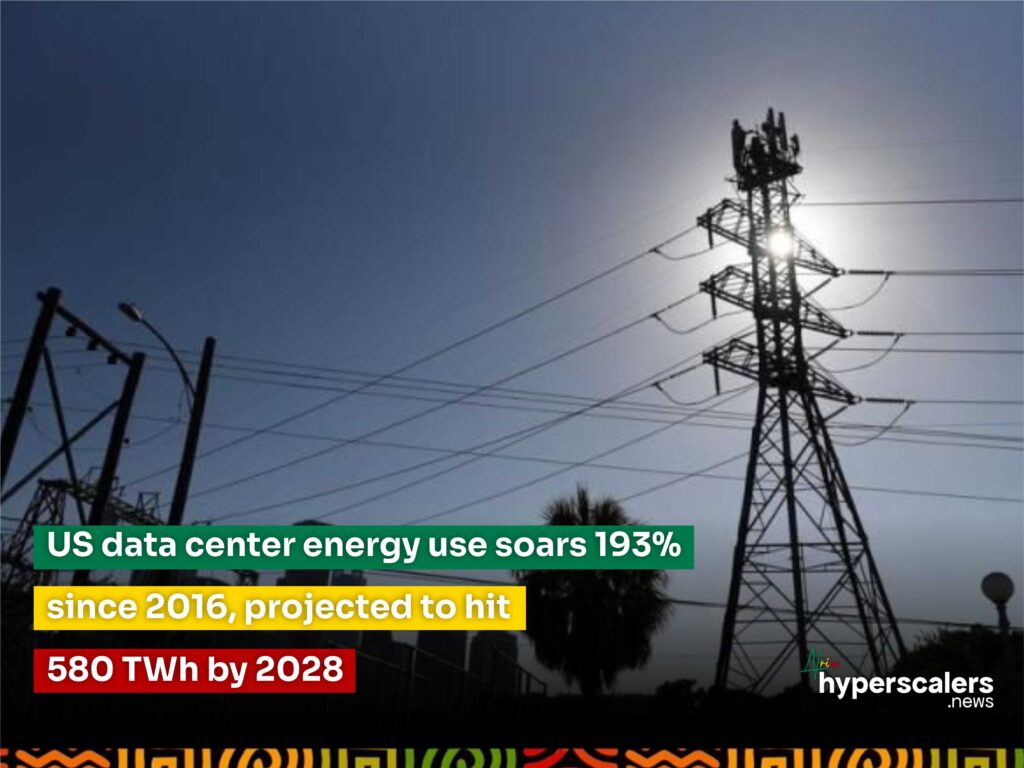A report by the Department of Energy (DOE), revealed that U.S. data centers consumed approximately 4.4% of the nation’s total power in 2023. However, this figure is expected to rise, potentially reaching up to 12% by 2028, with lower-end estimates putting it at 6.7%.
The findings come from the Lawrence Berkeley National Laboratory (LBNL), built on earlier studies from 2016 and 2007. The researchers, including LBNL’s Arman Shehabi, observed that data center energy usage remained relatively stable at around 60 TWh between 2014 and 2016. However, as AI servers were deployed on a larger scale, the industry’s power consumption grew, reaching 76 TWh in 2018, or about 1.9% of total U.S. electricity consumption.
As AI adoption continued to expand, data center energy usage accelerated, climbing to 176 TWh in 2023, 4.4% of total U.S. electricity consumption at a 193% increase within 7 years. Looking ahead to 2028, the researchers outlined a range of consumption scenarios, predicting between 325 TWh and 580 TWh, based on factors like construction data, GPU shipment forecasts, and cooling technology advancements.
The report highlights that U.S. data center electricity consumption is growing at an accelerating pace. From 2014 to 2018, the compound annual growth rate (CAGR) was about 7%. Between 2018 and 2023, it jumped to 18%, and it is expected to range between 13% and 27% between 2023 and 2028.

However, LBNL notes that these figures are based on estimates due to limited transparency in the sector, and its predictions rely on incomplete data. The lab also points out that its 2016 report did not foresee the rapid growth of AI servers, leading to higher-than-projected energy usage in 2018.
“The recent rapid growth in accelerated servers has caused current total data center energy demand to more than double between 2017 and 2023, and continued growth in the use of accelerated servers for AI services could cause further substantial increases by the end of this decade,” the report states.
The report also underscores that the surge in data center power consumption should be viewed in the context of the broader electricity demands expected in the coming decades. These include increased adoption of electric vehicles, onshoring of manufacturing, hydrogen utilization, and the electrification of industries and buildings.
“Research initiatives are needed not just to identify strategies to meet data centers’ future energy needs but also to help stakeholders use this relatively near-term electricity demand for data centers as an opportunity to develop the leadership and a foundation for an economy-wide electricity infrastructure expansion,” it adds.
While the DOE’s estimates are concerning, other studies have suggested even higher levels of data center power consumption, which could place significant strain on electrical infrastructure. “We should not dismiss these projections out of hand, as the most extreme cases would constitute a significant stress on electrical infrastructure,” the report cautions.
Regarding water usage, data centers consumed 21.2 billion liters of water in 2014, a figure that increased to 66 billion liters by 2023, with hyperscale data centers accounting for 84% of that total. By 2028, hyperscalers are expected to consume between 60 and 124 billion liters of water.





